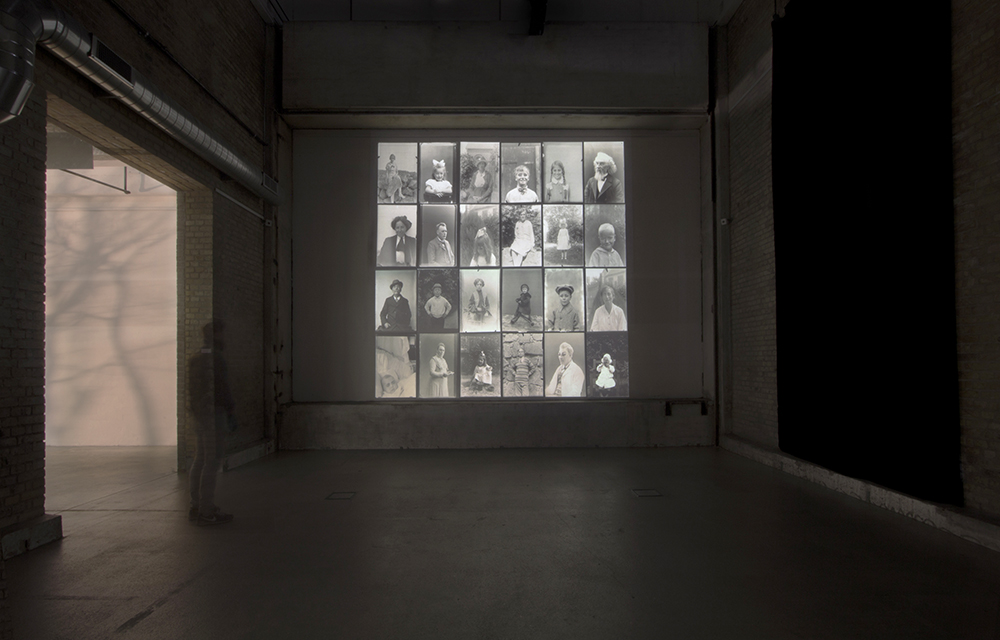Reflective Memories

-
PhotographerJoachim Fleinert
-
Moving Link
Reflective Memories, 2011 Fragment of the video installation, 21 animations. 5 minutes (made as loop), No sound. Biography: Joachim Fleinert (1984) is a visual artist living and working in Copenhagen. He defines himself as a collector, and his conceptual artworks and installations also usually surround original elements of found or archived imagery that he uses to explore broader historical, cultural, social or political themes. Joachim Fleinert work has been exhibited among other places at venues and institutions such as Pingyao International Photo Festival (CN), The Hasselblad Center (SE), Fotografisk Center (DK) and The Photographers’ Gallery (UK). Technique: The original video installation consists of 24 photographic portraits/animations (in Full HD) in a loop of 10 minutes each. Each setup is controlled by multiple projectors or monitors.The installation does not have a specific form or size and is normally shaped after the room it’s shown. No sound. About Reflective Memories: In an attempt to create a dialogue with the past, Joachim Fleinert tries to raise the question: Do we understand what we see when we look at a photograph and who is the creator of the image of reality? Is it the photographer with his camera, who determines the moment to take the picture, is it the person seen in the picture with the presence, or is it simply a matter of our ability to read empathy? For many years it has been said and discussed that the eyes are the windows to the soul, and several studies and surveys have reported on the mysterious and mystical in our eyes. The main inspiration for the installation comes from a particular study from Cambridge University in 1997 with the name: ‘Reading the Mind in the Eyes’. The survey was originally made with the purpose to study people with Asperger's syndrome, which is an area within autism. About the syndrome can be said, that people with Asperger are known to have empathy for others, however with a great difficulty to read and understand empathy. The experiment consisted of the participants to look at and analyze a photograph with a cropped area of- and around the eyes of someone who showed a certain feeling. What the study showed, when we exclude other forms of body language, is that the look of the gaze is a very important factor in the reading of another person's feelings. This is in various degrees, and in particular difficult to read for people with Asperger syndrome. But how do we interpret empathy, and how accurate are we at interpreting the feelings of others? Later studies of the same survey showed that even people without an autistic diagnosis may have more or less trouble to determinate the result of the same photographs, however to a much lesser extent than people with Asperger. The test proved (looking at a picture) that the gaze in the eyes and the small area around them is a very important factor in the reading of another person’s feelings. The survey can thus be a minor proof of humans diversity in the interpretation of an image and hence be a slightly scientific factor as to why we find an image interesting or not. Beside Joachim Fleinert’s own interactions, all the portraits appear in the installation as the original photographs as they were taken around Denmark in the period between 1890 and 1920.